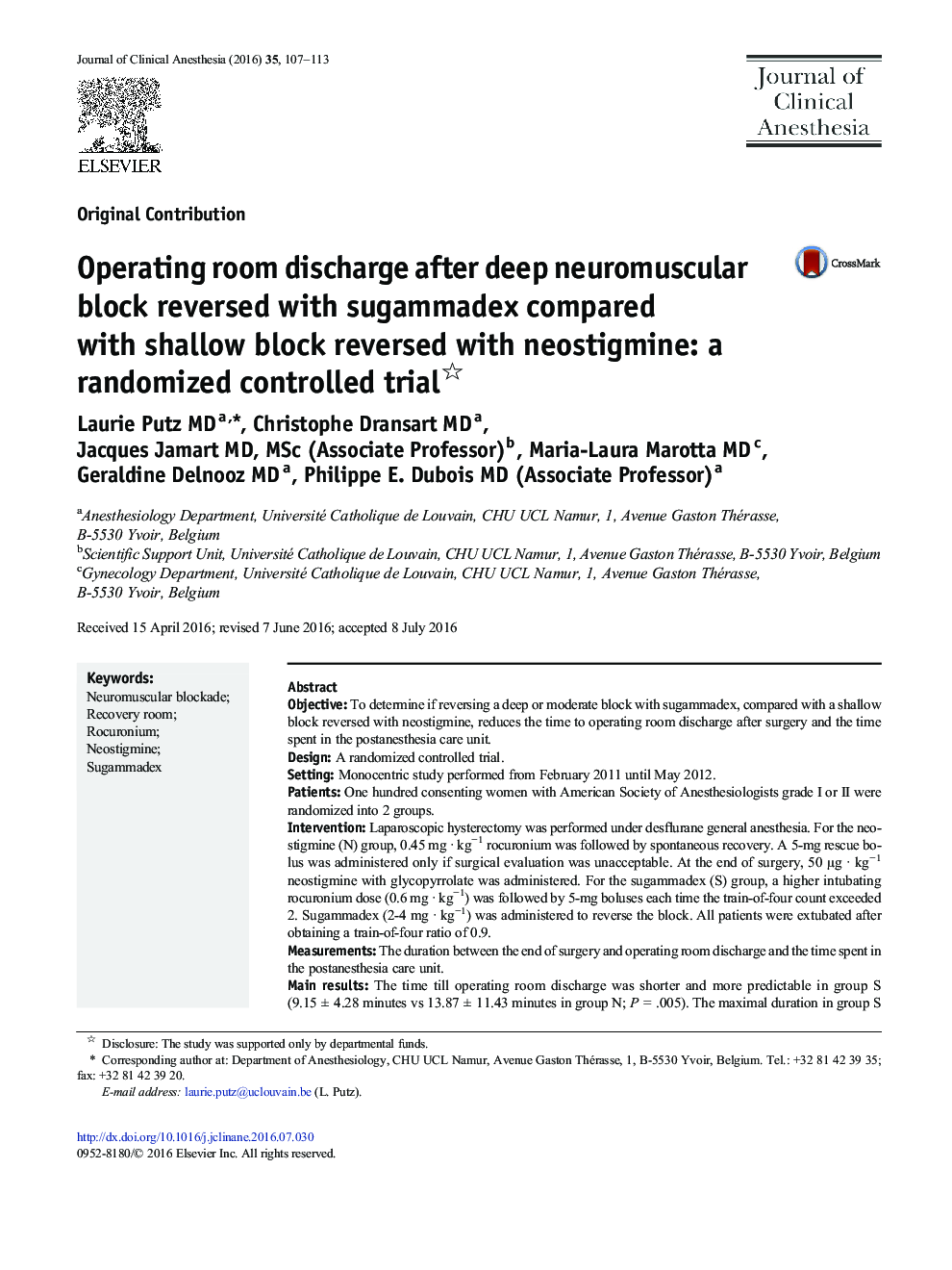| کد مقاله | کد نشریه | سال انتشار | مقاله انگلیسی | نسخه تمام متن |
|---|---|---|---|---|
| 5884273 | 1567655 | 2016 | 7 صفحه PDF | دانلود رایگان |

- Deep neuromuscular blockade improves laparoscopic conditions.
- Operating room discharge is faster and more predictable after sugammadex reversal.
- Even after shallow block, reversal with neostigmine is longer and more variable.
- The time spent while waiting for reversal has economic impact.
- Neuromuscular transmission monitoring is mandatory to rule out any residual block.
ObjectiveTo determine if reversing a deep or moderate block with sugammadex, compared with a shallow block reversed with neostigmine, reduces the time to operating room discharge after surgery and the time spent in the postanesthesia care unit.DesignA randomized controlled trial.SettingMonocentric study performed from February 2011 until May 2012.PatientsOne hundred consenting women with American Society of Anesthesiologists grade I or II were randomized into 2 groups.InterventionLaparoscopic hysterectomy was performed under desflurane general anesthesia. For the neostigmine (N) group, 0.45 mg · kgâ1 rocuronium was followed by spontaneous recovery. A 5-mg rescue bolus was administered only if surgical evaluation was unacceptable. At the end of surgery, 50 μg · kgâ1 neostigmine with glycopyrrolate was administered. For the sugammadex (S) group, a higher intubating rocuronium dose (0.6 mg · kgâ1) was followed by 5-mg boluses each time the train-of-four count exceeded 2. Sugammadex (2-4 mg · kgâ1) was administered to reverse the block. All patients were extubated after obtaining a train-of-four ratio of 0.9.MeasurementsThe duration between the end of surgery and operating room discharge and the time spent in the postanesthesia care unit.Main resultsThe time till operating room discharge was shorter and more predictable in group S (9.15 ± 4.28 minutes vs 13.87 ± 11.43 minutes in group N; P = .005). The maximal duration in group S was 22 minutes, compared with 72 minutes in group N. The time spent in the postanesthesia care unit was not significantly different (group S: 47.75 ± 31.77 minutes and group N: 53.43 ± 40.57 minutes; P = .543).ConclusionMaintaining a deep neuromuscular block during laparoscopic hysterectomy reversed at the end of the procedure with sugammadex enabled a faster and more predictable time till operating room discharge than did the classical combination of a shallower block reversed with neostigmine.
Journal: Journal of Clinical Anesthesia - Volume 35, December 2016, Pages 107-113